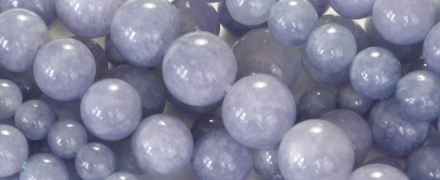open 10 am - 7 pm
laboratory is closed
Anhydrite

Anhydrite, due to its low hardness, is very rarely found in the form of cuts, just like the mineral closest to it, gypsum. But unlike gypsum, anhydrite is somewhat harder (3-3.5 on the Mohs scale) and often comes in attractive colors ranging from blue to purple. Transparent varieties of anhydrite are faceted to make collectible inserts. It is more common in the form of jewelry inserts and ornamental material of a granular massive texture. This material is translucent or semi-translucent, easy to process and often has an attractive color, which determines its use in inexpensive jewelry.
В геммологической практике бывают весьма увлекательные случаи с диагностикой ювелирных вставок
Но помимо редкости цвета и высокой стоимости таких камней, многие розовые камни выделяются одной замечательной особенностью – они проявляют плеохроизм, то есть в зависимости от положения осмотра камня он может иметь дополнительные оттенки – оранжевый или пурпурный.
Currently, gemstones are produced by two fundamentally different technological methods - the High Pressure - High Temperature method (“HPHT”, High-pressure & High-temperature) and the Chemical Vapor Deposition (“CVD”, Chemical vapor deposition) method. The "HPHT" method is the most tested classical synthesis method, which can be used both carbon deposition on diamond from flux melts and catalytic reactions. In "CVD" synthesis, diamond growth occurs on a seed during carbon deposition mainly from a gaseous medium at relatively low temperatures and pressures.
Jewelry and precious stones are just such a category of goods, when buying which you need to pay attention to many criteria.
Sogdianite is a rather rare mineral and more often it can be found as a collection material (moreover, in systematic collections), and it is extremely rare in jewelry.






